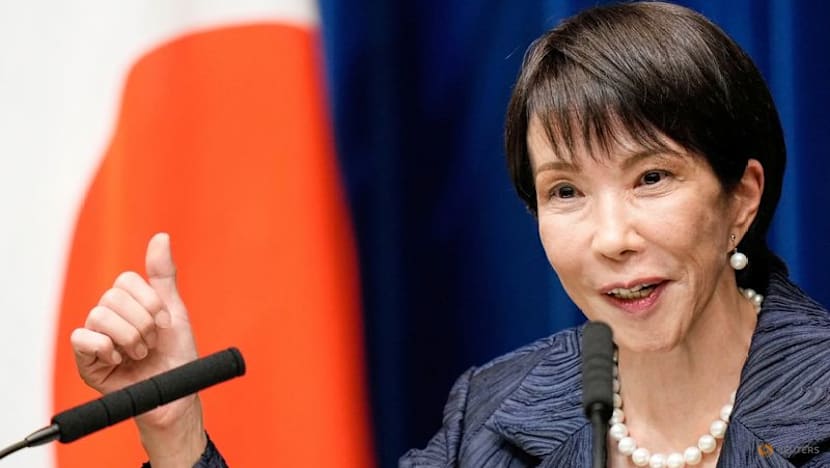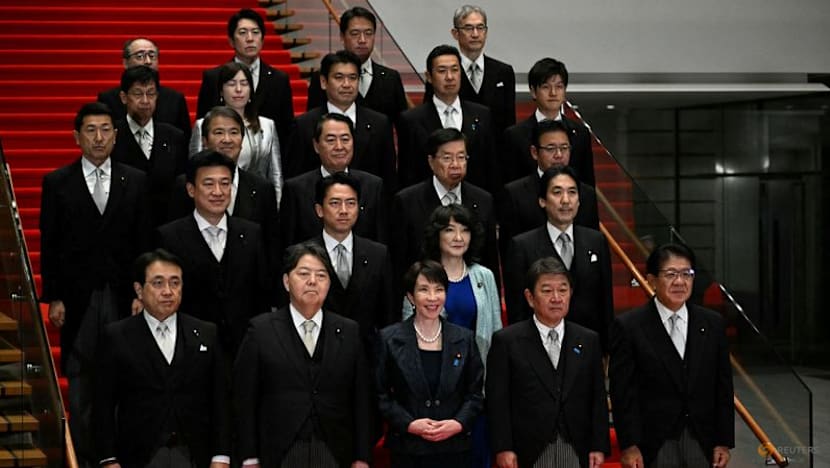'Crisis made this happen': Analysts on how new PM Takaichi shattered Japan's glass ceiling
At home, Sanae Takaichi inherits a fragile government and an economy burdened by stagnation. Abroad, she faces an intense diplomatic schedule that puts her leadership to an immediate test.

Japan's new Prime Minister Sanae Takaichi speaks during a press conference at the prime minister's office in Tokyo, Japan, on Oct 21, 2025. (Photo: Reuters/Eugene Hoshiko/Pool)

This audio is generated by an AI tool.
Japan has a new leader: Sanae Takaichi, the country’s first female prime minister.
Political observers are largely positive about the 64-year-old’s appointment, describing her as a “do-er” who is decisive, straightforward and pragmatic.
They believe her hands-on approach could provide the stability and direction Japan has lacked after years of short-lived administrations.
Japan has experienced a revolving door of prime ministers – five in as many years, with the ruling Liberal Democratic Party (LDP) rocked by scandals and struggling to maintain voter trust.
Nicknamed the “Iron Lady”, Takaichi rose from humble beginnings and defied the odds in the country’s male-dominated, dynasty-driven political landscape to secure the top job on Tuesday (Oct 21).
“Crisis made this happen,” said Kotaro Tamura, adjunct professor at the National University of Singapore’s (NUS) Lee Kuan Yew School of Public Policy.
“Japan is kind of in a crisis. Domestically, there’re so many issues – rising taxes (and) prices. We have issues with our neighbours and allies,” he added.
“Her job is not easy. She's very patient but at the same time realistic. She’s a do-er.”
Seijiro Takeshita, a professor of management and information at the University of Shizuoka, said the strong parliamentary vote count securing Takaichi’s win, coupled with positive market reactions, shows she is on “very firm ground”.
“(Markets are) high on expectations that economic revival will take place a lot smoother now,” Takeshita said.
“Takaichi is a very straightforward person. The milestones that will be set to implement policies will be a lot clearer than before. There's a lot of very positive expectations towards this coalition, which resulted in a lot of independents voting for her as well.”
Takaichi clinched the premiership after her ruling LDP and the right-wing Japan Innovation Party, known as Ishin, agreed to form a coalition.
However, the two parties do not hold a majority in either chamber of parliament. In the lower house, they are two seats short of a majority, meaning Takaichi will need to cooperate with opposition lawmakers to advance her policy agenda.
STRATEGIC CABINET PICKS
Analysts note that Takaichi’s Cabinet appointments were strategic, bringing in powerful rivals and experienced politicians to consolidate power and project party unity.
Several of her Cabinet picks had competed against her in the LDP leadership race just weeks ago. They include Defence Minister Koizumi Shinjiro, who was her main rival, and Foreign Affairs Minister Toshimitsu Motegi, a party heavyweight.

Takaichi appointed only two female ministers, dashing expectations for greater female representation in her administration.
However, experts said the move likely aligned with bureaucratic expectations and helped solidify her standing at a time when support is crucial.
“I think she emphasised the importance of status quo,” said Kei Koga, an associate professor at Nanyang Technological University’s (NTU) School of Social Sciences.
“(If there are) disruptions, then there probably might be some kind of instability within the party. Given they are a minority government, the LDP needs to have a strong unified front.”
ECONOMIC OUTLOOK: SANAENOMICS?
Analysts also praised Takaichi’s “strong pick” to oversee the country’s coffers.
Satsuki Katayama, Japan’s first female finance minister, is a former high-ranking finance ministry official with deep knowledge of the institution’s inner workings – a background seen as critical for navigating Japan’s complex fiscal challenges.
Takaichi is a long-time advocate of "Abenomics", the economic policies of her late mentor, former prime minister Shinzo Abe. Expectations for her policies, in what some have now dubbed "Sanaenomics", include fiscal expansion and monetary easing.
However, coalition partner Ishin favours deregulation, budget cuts and smaller government – a stance that could dampen Takaichi’s economic ambitions.
“Ishin thinks the country should be run like a business. That's going to run directly counter to the tradition that Takaichi represents … generous fiscal policies, loose monetary policies, kind of economic thinking,” said Michael Cucek, an Asian studies professor at Temple University.
“The coalition agreement that the two sides have worked out does not patch over that big gap between their basic (financial) philosophies.”
INCOMING DIPLOMATIC BLITZ
Takaichi faces an immediate, rapid succession of diplomatic tests.
This weekend, she is set to make her debut on the international stage at the Association of Southeast Asian Nations (ASEAN) summit in Malaysia.
She will then rush back to Tokyo to host United States President Donald Trump, who is scheduled to arrive on Monday.
She will also attend the Asia-Pacific Economic Cooperation (APEC) leaders’ meeting in South Korea, which kicks off on Oct 31. There, she is expected to meet South Korean President Lee Jae-myung.
Analysts said the inaugural Takaichi-Trump meeting is particularly significant, as the US is among Japan’s closest allies with deep defence and economic ties.
“With the US’ decision-making power is pretty much concentrated on Trump right now, Takaichi needs to have some kind of good personal relationship with him, (just like) former Prime Minister Abe did before,” said NTU’s Kago.
Trump and Abe were regular golf buddies and analysts said the former prime minister leveraged the friendship to advocate for Japanese interests, including trade.
NUS’ Tamura said he expects Takaichi to handle Trump better than previous administrations, citing their overlapping nationalistic views.
“Takaichi’s philosophy of ‘Japan First’ resonates well with Trump’s ‘America First’. So, I think she can create good chemistry with Trump,” he told CNA’s Asia Now programme.
Takaichi has also emphasised the importance of trilateral relations with the US and South Korea in bolstering defense and economic security in the region, and observers expect her to increase engagement with Seoul.
As for China, Japan’s largest trading partner, analysts said Takaichi is likely to take a pragmatic approach to the relationship, seeking to strike a careful balance between Washington and Beijing.















